Even in 2022, Italy was among the most sought-after, loved and visited countries by tourists from all over the world. Its attractions, cities and culture are synonymous with an unforgettable trip at any time of the year. Beyond the most famous and overused destinations, new travel trends are emerging for the year that has just begun. Where will those who love Italy and want to discover new destinations go on holiday in 2023?
In this guide, we have selected for you 10 destinations not to be missed this year. These are destinations that offer themselves as an alternative to mass tourism, destinations that gather tradition and identity among their streets, that have their most valuable asset in their local community, as well as other cities, places and small villages that have distinguished themselves in the past, and will continue to do so in the future, for environmental issues or that tell their story through new digital communication strategies.
So, here are the 10 Italian destinations not to be missed in 2023. Discover them with us.

10. Ofanto: a natural park with a story to tell
Ofanto River Regional Natural Park is characterised by a strong cultural and territorial identity with its important archaeological, historical and naturalistic heritage. It is a territory to be explored that hides dozens of treasures, an opportunity to immerse yourself in the green and often uncontaminated and mysterious nature of Puglia.
The Ofanto river has been an important presence in Italy since ancient Roman times and with its 170 kilometres it is the longest river to flow into the Adriatic, crossing three regions. However, it is in Puglia that it hides its best treasures, gathered in the Regional Nature Park which embraces 11 Apulian municipalities.
The Ofanto River Regional Natural Park was established in 2007 and is a protected natural area that encloses an incredible natural value. The river and its surroundings can offer numerous specimens of local poplars and oaks to the animals found here in their natural habitat for a full immersion in Italian nature.
Inside the park, you can carry out various outdoor activities both as a tourist and as a sportsman, such as long excursions on horseback, up to canoe and kayak trips along the river.
Perhaps the most interesting project, however, is the Ofanto Cycle Route, recently completed in its Apulian section. This is a cycle path that accompanies the Ofanto river on its journey and allows visitors to explore the park through themed itineraries, in a respectful exchange between man and nature, in a respectful exchange between man and nature.
9. Ostia: the archaeological pearl in the South of Rome
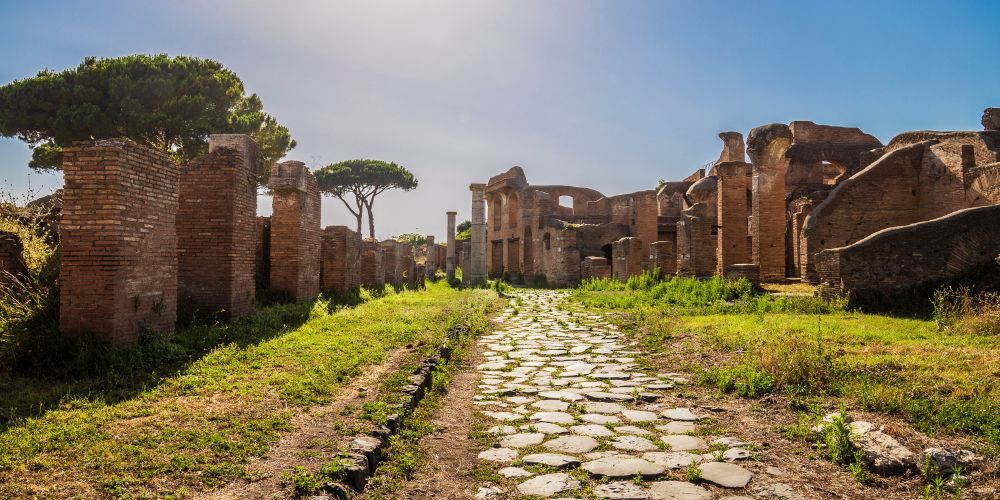
South of Rome is one of the pearls of Lazio and Italy as a whole, Lido di Ostia or simply Ostia. It is a place that extends the beauty and historical and cultural grandeur of Rome to the sea, maintaining and enhancing its cultural identity. Its foundation dates back to the reign of Anco Marzio when it was transformed from a strategic military base of the kingdom of Rome into a tourist and commercial centre of the Roman Empire.
The present inhabited centre was built at the beginning of the twentieth century to provide the city of Rome, again, an outlet to the sea. Ostia is often a destination for those who want to spend a day away from the chaos of the capital, walking along the seashore on the black sand beaches. What distinguishes Ostia is its retro charm with buildings and bathing establishments that recall Italy in the 1950s. Among the things not to be missed is the brand new seafront promenade, the small fishing village and Tor San Michele, one of the remains of the medieval fortifications of the ancient village.
However, Ostia is famous, above all for Ostia Antica, the centre built in the 4th century BC, which together with Pompeii is the largest archaeological site in Europe. Currently just under half of the ancient city has been brought to light with the baths of Neptune and the necropolis that are the masters, together with the baths of the Sette Sapienti and the wonderful Roman theatre, which could accommodate 4000 people.
8. Altamura: the city of bread a stone's throw from Matera
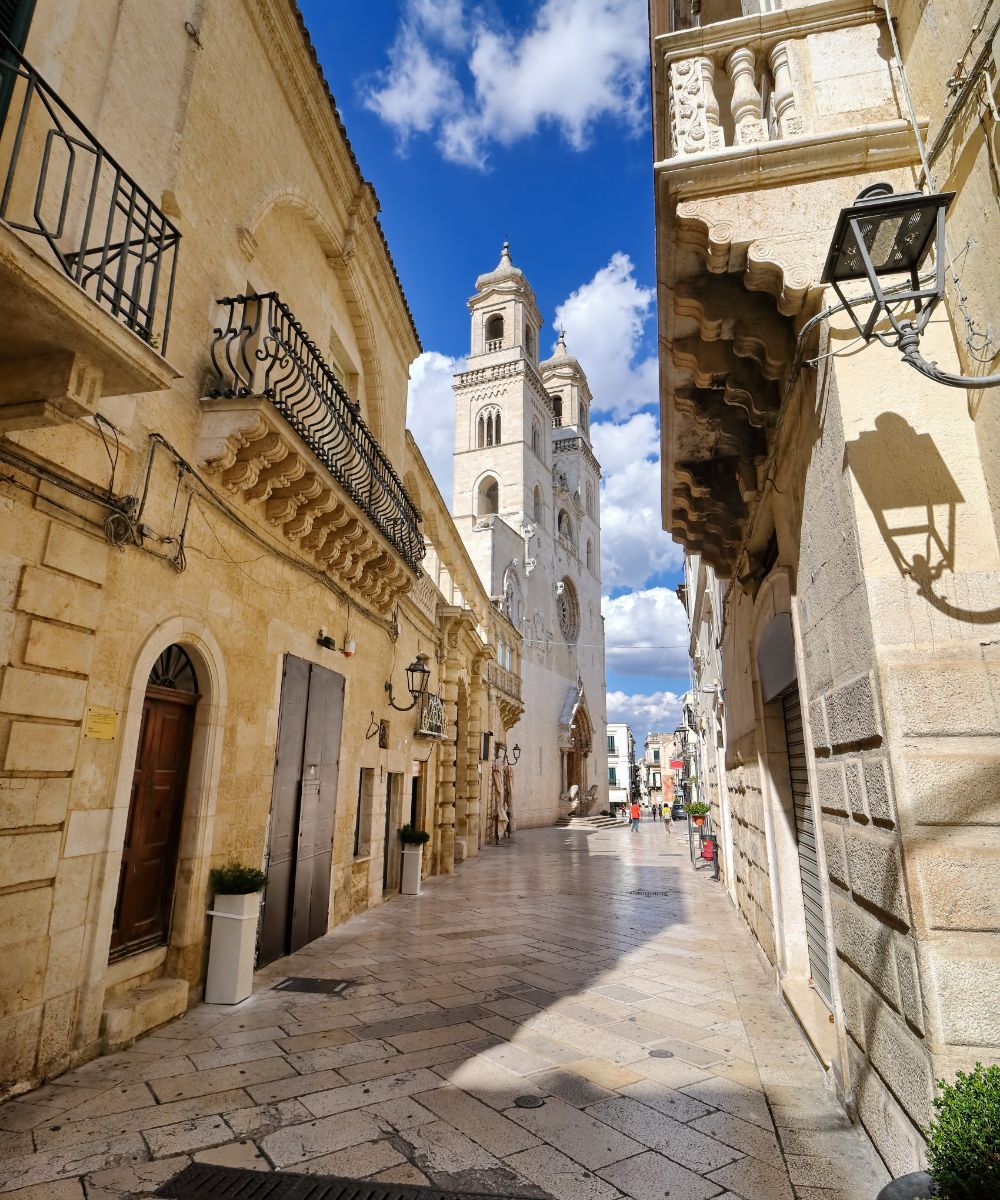
The next destination, not to be missed, we suggest is Altamura, famous all over the world for its bread. It is a city where the environment, culture and gastronomic tradition intertwine in a vortex of rare and unique beauty. A destination that offers many different types of ideas and which can change according to your preferences.
The city of bread, a few kilometres from Matera, is located in the Murgia, the Apulian karst plateau, characterized by light and white rocks and where a particular and very good quality of wheat grows, exported throughout Italy. It is a destination of historical and early historical interest which still maintains its identity today. Among the most beautiful things to see there is certainly the majestic Cathedral of Altamura, built at the behest of Frederick II of Swabia, with its rich Baroque style inside and with the two bell towers that make the facade symmetrical.
Another attraction is the Caves of Altamura where the remains of a Neanderthal man were found. The famous man of Altamura has a date of about 130-190 thousand years ago.
7. Cesenatico: the seaside village of good living

Cesenatico is a seaside village nestled in the heart of the Romagna Riviera. The online social campaign promoted by the village itself has led it to be one of the most sought-after destinations by Italians in recent years and even in 2023 it is a destination not to be missed.
The seaside village is waiting to be discovered with the colourful historic centre, divided in two by a row of ancient sails that colour the Leonardo Porto Canale. A village of sailors and fishermen that still retains the colours of the houses and the particular character that the village of good living can offer. Cesenatico is the ideal destination for a beach holiday on the Adriatic coast with wide beaches full of attractions for children, camping enthusiasts and water games.
6. Orvieto: the most famous village in Italy not to be missed
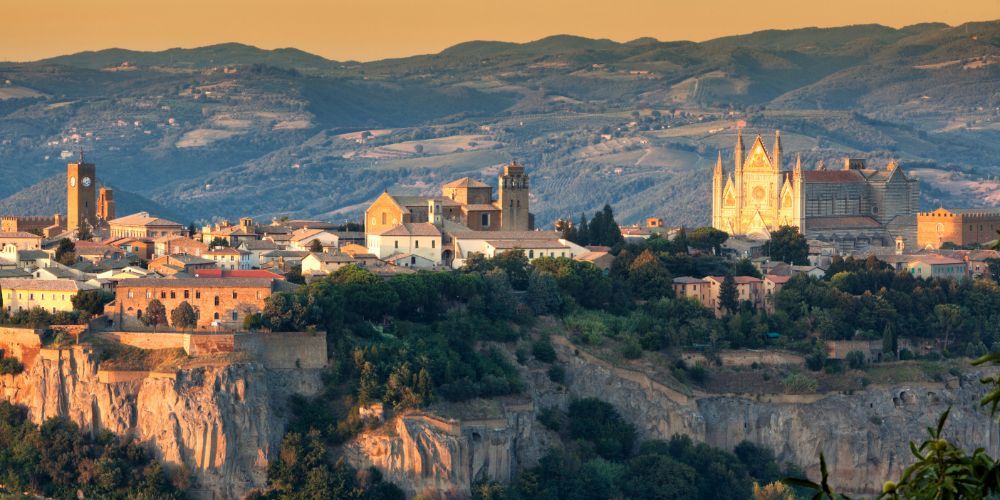
Orvieto is one of the oldest and most visited cities in Italy. It has very ancient origins but is famous for its morphological and architectural beauty, for these reasons in recent years, it has been the destination of many tourists who have made it a real social media star with hundreds of posts dedicated to this small village perched on the ridge of tuff in the middle of Umbria
Despite these characteristics, the merit of Orvieto's fame is mainly due to the magnificent Cathedral homonym. It is an example of Romanesque-Gothic architecture, very rich in works of art, which houses the Sacred Corporal inside. But there are also many other attractions such as the well of San Patrizio, an incredible work of civil engineering from the sixteenth century.
5. Chioggia: the little Venice
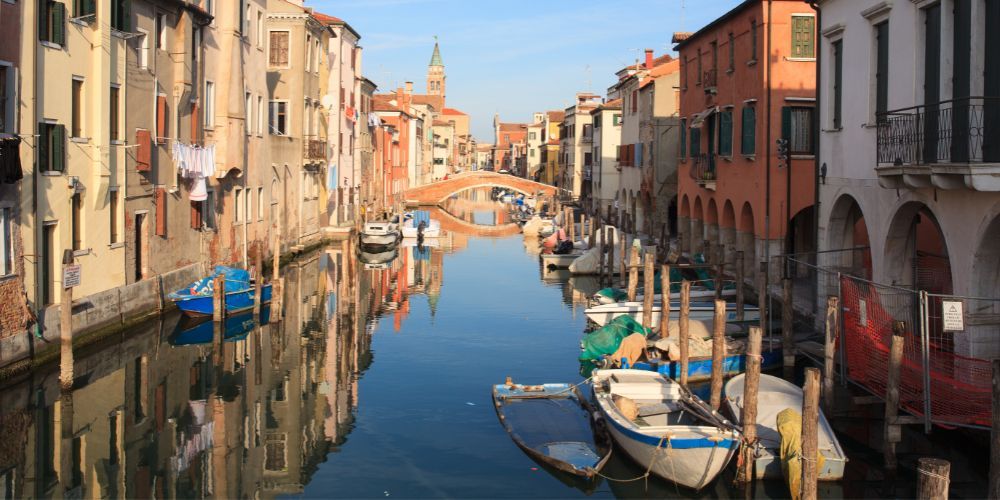
In 2022 Chioggia was included by the New York Times among the must-see destinations in Italy as an alternative, or even privileged, destination compared to its bigger and more famous sister, Venice. The small lagoon city is considered the "Little Venice" and it is a beautiful reality.
The name "Little Venice" derives from the proximity but also from the urban characteristics, which recall those of the Serenissima Venice. It is composed of a system of islets divided by canals on which fields, alleys and historical buildings, sacred buildings and museums find space. As demonstrated by the interest of the New York Times, Chioggia deserves much more than the stereotyped alternative to Venice. It has a respectable history, given that it is also before Venice as mentioned above and its origin can be placed on a project by the Romans. Among the most valuable architecture to see there is the Palazzo del Municipio and the Cathedral of Santa Maria Assunta.
4. Cilento: a land of authenticity
"The secret charm of an authentic land" is a concise but meaningful description that has supported Cilento in recent years. A land that hides and preserves a series of natural, cultural, historical and architectural beauties that the whole world envies us, within the Cilento, Vallo di Diano and Alburni National Park. The Cilento National Park has been a UNESCO World Heritage Site since 1998 and includes beauties such as the archaeological park of Paestum, the Certosa di Padula, as well as beautiful villages halfway between the sea and the mountains such as Palinuro and Marina di Camerota.
It is one of the most popular tourist destinations for all the tourists who come to these areas, especially during the summer, when hundreds of events and shows are organized to spend an unforgettable holiday in one of the most beautiful places in Italy and the world.
The Cilento, Vallo di Diano and Alburni National Park is among the destinations not to be missed for 2023 and also for food, even the culinary tradition of this land has entered the UNESCO World Heritage list: the famous Mediterranean diet. A diet that combines a healthy lifestyle with a healthy diet with local and genuine products.
3. Castiglione della Pescaia: the Switzerland of Maremma

One of the best destinations not to be missed is undoubtedly Castiglione Della Pescaia, a Tuscan town in the northern Maremma. It is one of the main Tuscan destinations for summer tourism with its beautiful sea and breathtaking views.
Despite being a very small town, it has often been awarded by Legambiente (5 Sails in 2005 and 2014, 2015 and 2016) and by the Touring Club for its immense beauty and cleanliness, so much so that it is also known by the name of "Switzerland of the Maremma".
In advance of European regulations, since 2019, Castiglione della Pescaia adhered to a plastic-free policy, with a ban on the sale and distribution of single-use plastic throughout the whole municipality.
2. Urbino: heart of the Italian Renaissance
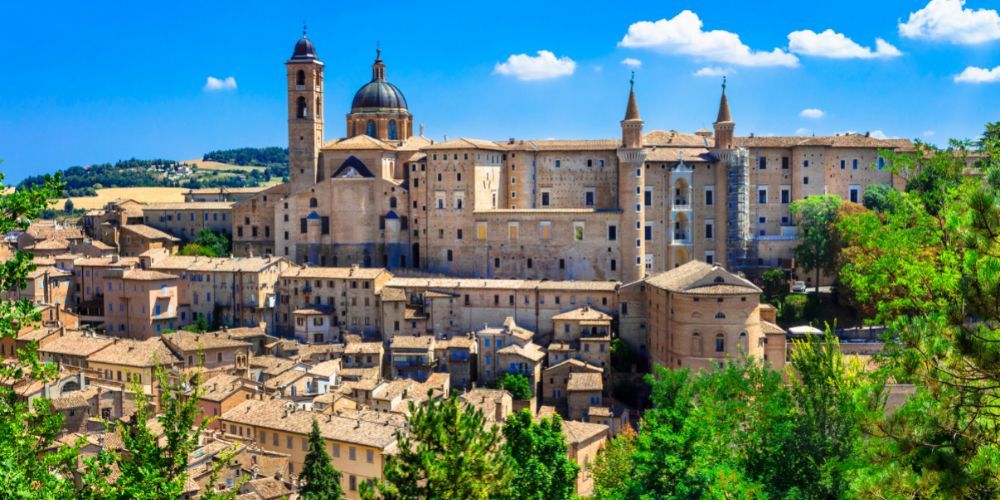
One of the best last destinations not to be missed for 2023 is undoubtedly Urbino, a Renaissance city par excellence designed to be the ideal city of the sixteenth century. Among the most important Italian Renaissance centres and art city, it is a UNESCO World Heritage Site and has given birth to some of the best artists and cultural men of Italian history such as Raffaello Sanzio, Piero Della Francesca and Federico da Montefeltro.
As part of the great communication campaign carried out in recent years by the Marche Region, Urbino has been able to stand out in its essence as city of art, from its communication, to the streets of the historic centre that give you the feeling of reliving an important piece of Italian history, the Renaissance.
Among the things that you absolutely must not miss while visiting Urbino there is undoubtedly the Palazzo Ducale, an expression of the ideal city, built in about 30 years, as well as the house that gave birth to Raffaello Sanzio.
1. Northern Sardinia: nature, events and culture
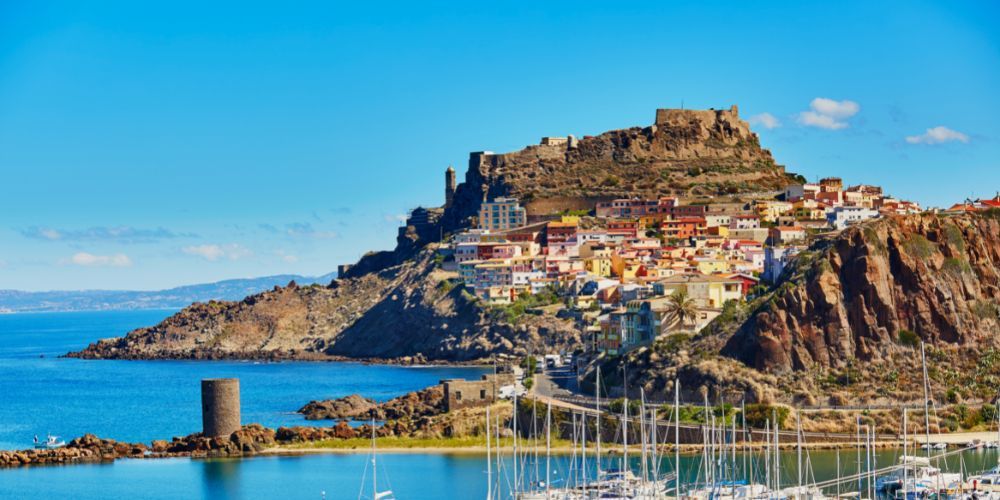
In the heart of the Mediterranean Sea lies one of the most visited and sought-after beautiful Italian land in the world, Sardinia. Known throughout the world for its beautiful beaches and pristine sea, particularly in the northern part it has a constellation of natural, historical and cultural attractions not to be missed. Among the most fascinating areas of northern Sardinia, there is undoubtedly Gallura with all its pristine beaches and one of the fashionable areas par excellence, the Costa Smeralda.
Visiting Northern Sardinia is an experience both for the whole family and as a couple or with friends from the Maddalena archipelago to the historical and cultural riches of cities such as Sassari and Alghero. In addition to the high density of natural beauties, Sardinia hosts cultural and tourist events and festivals that promote and enrich it throughout the year. One of the most important exhibitions in Northern Sardinia is that of Salude e Trigu which for years has been collecting and enhancing all the best events held in Northern Sardinia both in summer and in autumn.
About the author
Written on 11/01/2023

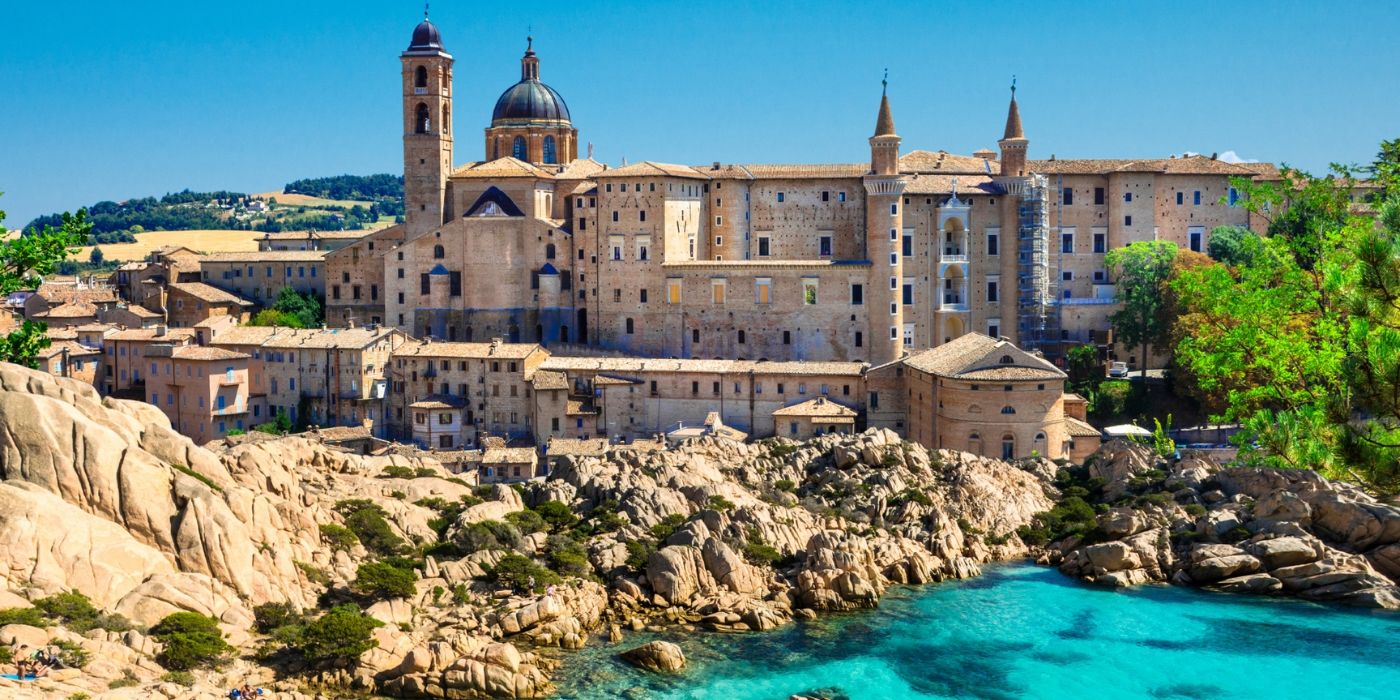

Mario Galterisi
Beauty, culture and innovation. Discover the 10 destinations not to be missed in Italy in 2023 selected by Visit Italy.